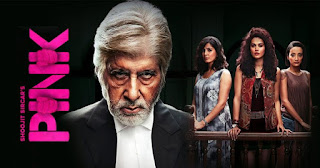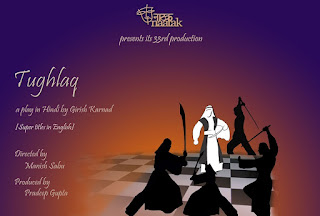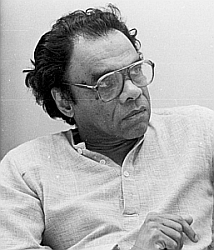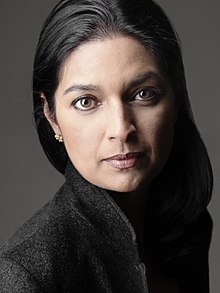Research Paper
Language, Gender and Power
Presented by:
1} Surbhi Gausvami
(M.A. SEM: 3)
E-mail:
gausvamisurbhi17@gmail.com
Mobile: 7490920184
2} Dharaba Gohil
(M.A. SEM: 3)
E-Mail: dharagohil2907@gmail.com
Mobile: 9574488401
Smt. S. B. Gardi,
Department of English
Maharaja
Krishnkumarsinhji Bhavnagar University.
Abstract:
An attempt has been made in this paper
to enquire if women experience linguistic discrimination which reduces them to
invisible frail creatures devoid of individual identity. Gender is not same as
sex. The latter is being biologically male or female. Gender is constructed
while sex is given. It is through language that we construct gender. We have vocabulary
related to the behavior of izzat, haya, sharm etc. All these words are given to
only particular gender that is female.
According to French philosopher
Jacques Derrida, we always find a binary opposition between man and woman.
Woman always portrayed inferior to man. It is language that makes the all
differences. Language always connected with the issue of power and ideology.
Even the text of tools can be read through gender and power. Girls being more
delicate must be given softer and harmless things. Boys being stronger can be
given harder objects. Language of toy indicates that girls are weaker. These
discourses are patriarchal and treat woman as inferior, gentler and requiring
protection. Slang words are always connected with woman, there the language
that plays a vital role to abuse woman. Several Bollywood movies explore the Language,
Gender and power conflict such as Angry Indian Goddesses, Nil Battey Sannate, and
Lipstick under my Burkha, Parched, and Pink. Gender is not something we are
born with and something we have but something we do and something we perform,
particularly through our linguistic behavior.
Key Words: Power conflict and Gender, Linguistic
discrimination, Power controls language.
Language and power
“…..there is not an external
relationship ‘between’ language and society, but an internal and dialectical
relationship. Language is a part of society; linguistic phenomena are social
phenomena of a special sort, and social phenomena are (in part) linguistic
phenomena”. People shape the language and language shapes people.
This is very pertinent question that
‘What has gender got to do with either language or power?’ Gender is something
which is constructed. And it is constructed through language. But where does
language come in, you will ask? It comes in because it is through language that
we construct gender. Our words, our sayings, our songs, our jokes, our stories
and poetry — all these carry the values which construct gender. Language is a
tool of powerful people in structuring and representing the world. Power
controls the language. We live in a Patriarchal society, power structure is
organized and work according to the will power of Patriarchy. They are in power
so they dominate and subjugate other identity or gender.
There
are jokes, songs, matrimonial advertisements, proverbs, fairy tales, drama and
fiction in which the familiar is rendered as unfamiliar; the seemingly
innocuous turns out to be Machiavellian and we find the ugly face of racism and
sexism behind the jokes we laughed at and the songs we enjoyed. The main point
is that women are represented as unintelligent, boring (as wives and sisters
but not as beloveds), chattering, emotional and cowardly in our public discourses.
Our conventional wisdom in proverbs reinforces these negative stereotypes also.
Advertisements, songs, poetry and drama also reinforce these stereotypes and
also represent women as sex objects to the exclusion of all other aspects of
their humanity. The lists of some of the terms, traits and attributes assigned
to males and females are given to show how stereotypes about gendered notions
of society are constructed. For example strong is used for males and weak for
females, similarly independent vs. dependent, Wizard vs. Witch, Governor vs.
Governess and Mister vs. Mistress, are some of the attributes or terms which
clearly show that the words used for women are inferior.
The lists of some of the terms, traits
and attributes assigned to males and females are given to show how stereotypes
about gendered notions of society are constructed. For example strong is used
for males and weak for females, similarly independent vs. dependent, Wizard vs.
Witch, Governor vs. Governess and Mister vs. Mistress, are some of the
attributes or terms which clearly show that the words used for women are
inferior. Females are always made silent beings and ignored. Some of the gendered
stereotypes like “Women are less intelligent”, “Women are cowardly”, and “Women
are confused”, etc. are common in our society. The main point is that women are
represented as unintelligent, boring, chattering, emotional and capricious in
our public discourses.
Shahid Siddiqui is renowned Indian
journalist and writer. His famous book “Language Gender and power” gives a
lucid account of interrelationships between language, gender and power with a
focus on South Asia. The book is of particular value because treatments of
language and gender in this region have hitherto tended to lack a critical
focus on questions of power. Dr Shahid Siddiqui, in his book ‘LANGUAGE, GENDER
and POWER has brought into the readers’ attention, the hegemony of language, in
relation with gender and power controlling various segments of society. The author
has in fact, covered all the areas of social sciences, such as politics
sociology psychology, history, education, and media. The writer points out that
it was the language which dominated on the economy of Subcontinent in the
colonial era. He views that it was the emergence of English Language which
brought forth elite class. The writer has very well referred classical Nursery
Rhymes, Proverbs and jokes which have projected women as weaker beings not only
in South Asia but in the Western World also. According to the author it is
basically the power of language which has attributed such words to women like: curious,
unintelligent, talkative, irrational beings and so on. The author suggests that
media should use its linguistics power to shape the minds and attitudes of
society, instead of perpetuating the misrepresentation of women it should
strengthen their image. The writer Shahid Siddiqui is in fact, of the view that
if language can weaken the image of something valuable, in the same manner it
can also strengthen the underestimated, disregarded and conventionally undervalued
sections of society. According to the writer this can only be achieved by
inculcating critical thinking in the learners through language teaching. The
young generation should be infused and armored with linguistic power to use the
same for uplifting the unappreciated bits of society. (Siddiqui)
Language constructs sexual difference
and power relations among groups. Language plays a vital role in structuring
individual identity and human relations. Roles are given to the man and woman,
predetermined before the birth. Therefore girls are treated in inferior way and
language surrounds that behavior. Typical roles are given to the male and female
such as;
“Ram khir kha” and “Sita kam
kar”.
Women always have to done household
work. They are not born to be intellectual or brave. So they should remain in
the house, this is stereotypical mindset of the society. All slang words are
always related with female, which portray woman as inferior to man. We find a
constructed mindset of society related to female that they have to live in
‘Parda’, they should behave in particular manner, girls should be beautiful,
”HAYA” and “SHARM” is considered as ornament that every girl should wear.
Therefore all children’s game represents woman as fair and beautiful. So
children’s minds are constructed from very initial phase that girl means
something who is fair and beautiful. Therefore they will not accept less attractive
woman.
Social factors and attitudes play
a vital role in shaping language because it is the social system within which
we live that determines the linguistic choices we have available to us in ways
that reflect our society’s main concerns. These effects imply that the language
one speaks imposes constraints both on what it is possible to say and perhaps, more
important, on what it is possible to think. Language is continually constructed
in practice. Both language and gender are fundamentally embedded in social
practice, deriving their meaning from the human activities in which they
figure. Men and women are socially different as the society lays down different
social rules for them and expects different behavioral patterns. Human society
is tainted with sexism, which may be described as a system of beliefs,
prejudices and behaviors by which a group of people are oppressed, controlled
and exploited owing to gender differences. Unfortunately such differences are never
allowed to retain their status and usually tend to become hierarchical in
popular consciousness. Thus gender does not only refer to sexual differences
but also to a set of socially-defined roles, and identity which people come to
develop in the process of socialization involving power relations. Gender is
related to language.
What is meant by sexist language?
Women experience linguistic discriminations not only in the way they are taught
to use language but also in the way general language treats them. Female words
are often negative, converging frailty and a sense of subordination as well as
immaturity. The words associated with women generally undergo a process of
semantic derogation. When the sexist language is accepted as part of our everyday
interaction the subjugation of women becomes reutilized in daily discourse. The
routine uses of forms that conceal or trivialize women reduce the salience and
significance of women as a social category. Sexist language can be equated with
social behavior which helps to create and maintain an atmosphere of inequality.
In many traditionally acclaimed literary texts, mostly written by males, men
are presented as strong, active and rational and women as weak, passive, and Emotional
supporting an underlying belief in the superiority of male over the female As
such images purport to represent reality, they contribute to an oppressive or
restrictive model of femaleness, with which women are assumed to identify,
thereby perpetuating inequality. Women’s lower position and dignity in the
society may be attributed to the patriarchal structure of society. According to
Tannen (1990) in order to be socially acceptable, women cannot exert Control
and must support men in their control. In this casting of social power, men are
not necessarily consciously flaunting power, but are simply rewarded by the
social system. (Dutta)
In ancient time most of the
literature was written by male writer, right from the beginning such as great
epic Valmiki’s ‘Ramayana’, Vyas’s ‘Mahabharata’, Milton’s ‘Paradise lost’ etc.
These entire epic portrayed woman as emotional, soft, weak, -responsible for War.
Because all these epics were written by
male writers. Literature is an important cultural practice which not merely
reflects but also affects the way women are perceived. In the literary texts
women are portrayed consciously or unconsciously in negative ways and such
portrayals contribute to broaden cultural assumptions about gender differences.
Observations of the differences
between the way males and females speak were long restricted to grammatical
features, such as the differences between masculine and feminine in morphology
in many languages. However, in the 1970s women researchers started looking at
how a linguistic code transmitted sexist values and Bias. Lakoff’s work (1975)
is an example of this; she raised questions such as: Do women have a more
restricted vocabulary than men? Do they use more adjectives? Are their
sentences incomplete? Do they use more ‘superficial’ words? Consequently, researchers
started to investigate empirically both bias in the language and the
differential usage of the code by men and women.
a) women talk more/less than men; b)
women break the ‘rules’ of turn- taking less than men c) women use more
standard forms than men; and d) women’s speech is less direct/assertive than
men’s. Results in the analysis showed that there does not seem to be a distinguishable
difference with respect to the usage of language by men and women potentially due
to the establishment of an informal atmosphere during the recorded sample and
to a sense of solidarity among participants, which enabled them to make use of
the code to maintain conversation.
There are several Bollywood
movies that explore the issue of power and gender, patriarchal society, gender
inequality, control of language on particular gender, linguistic discrimination
etc. Examples of movies are as follow…
1) ‘Angry Indian Goddesses’
‘Angry
Indian Goddesses’ is the movie directed by Pan Nalin. It portrays the important issue of gender
inequality and power structure. It has seven women actors who fight for unique
identity and against misogyny in their different world. Film celebrates womanhood
and friendship. What hurts though, as a woman viewer, is the fact that under
the guise of showing women as independent individuals, the director ends up
portraying them as characters itching to turn the tables on men to get
privileges that men typically enjoy in our current societal set-up. (Kaushal)
2) ‘Lipstick under My Burkha’00
Lipstick under My Burkha is 2017
Indian black comedy film written and directed by Alnkrita Shrivastav. The film
premiered at the Tokyo and Mumbai Film Festivals, where it won the Spirit of
Asia Prize and the Oxfam Award for Best Film on Gender Equality. The story
tells the tale of Rosy – the heroine of a (pulp Fiction) erotic novel. The
young college going girl who loves jeans and Miley Cyrus and is a talented
singer, but is forced to sew and wear Burkha that make her invisible to the world.
The red lipstick that connects them all is the sign of the underlying freedom
that every woman seeks. It is about all women living in the shadow of tyranny,
and how they all choose to defy their lower middle-class society rules to find
their own freedom. (Bhave)
3} pink
Pink is a 2016 Indian courtroom
drama social thriller film directed by Aniruddha Roy Chowdhury. This movie is a
strong example of power and gender conflict. Women characters fight for their
identity throughout the film Pink is a powerful statement on the existing
feudal mindset of a majority of India, where men and women are judged by a different
yardstick. And if the man happens to be from a powerful family, then the fight
for justice is even more skewed. Very beautifully film portrays that There is no
importance of female voice in the society. When Minal, main woman character
says ‘No’ it does not have any value. (Iyer)
Conclusion:
The fight for gender equality in
India still remains a steep task in our society where women, from womb to
grave, face violent forms of gender bias such as female infanticide, apathy for
the girl-child, sexual harassment and the menace of dowry. Women are not born,
they are made. The making of a man or a woman is a never ending process that
begins before the birth. It is because gender is not something we are born with,
and something we have, but something we do and something we perform,
particularly through our linguistic behavior. The predominance of masculine
terms as hyponyms as well as the abusive words pertaining to the sexual conduct
of women for which there is no male counterpart, portrays vividly the
powerlessness of the females in the society. Gender is so deeply engrained in
our linguistic system, in our understanding of ourselves and of others, that we
almost cannot utter a single word before others, without taking gender in to
our consideration thereby paving the way for hierarchical power dynamics where
man is at the top and woman at the bottom. However as sensitive individuals it
should be our constant endeavor to fight for gender equality in order to ensure
an egalitarian society. Let us begin with the elimination with sexist language
by using gender neutral terminologies not only in written forms, but also in
daily conversational discourse so that we can do justice to both genders.
Works Cited
Bhave, Nihit. The Times of India Emtertainment.
24 july 2017. 30 September 2017
<https://timesofindia.indiatimes.com/entertainment/hindi/movie-reviews/lipstick-under-my-burkha/movie-review/59645392.cms>.
Dutta, Hemanga. MAI Review,Article 2. 2008. 30 September 2017
<http://www.review.mai.ac.nz/index.php/MR/article/viewFile/171/177>.
Iyer, Meena. The Times of India. 23 January 2017. 30 September
2017 <https://timesofindia.indiatimes.com/entertainment/hindi/movie-reviews/pink/movie-review/54325066.cms>.
Kaushal, Sweta. hidustantimes. 5 December 2015. 30 September 2017
<http://www.hindustantimes.com/movie-reviews/angry-indian-goddesses-review-a-fun-ride-that-ends-in-cliched-seriousness/story-wbIsNJP65cIXcy45RLmSGK.html>.
Siddiqui, Shahid. 14 March 2017. 30 September 2017
<http://shahidsiddiqui.com/2017/03/14/language-gender-and-power-the-politics-of-hegemony-and-control-in-south-asia/>.




Comments
Post a Comment